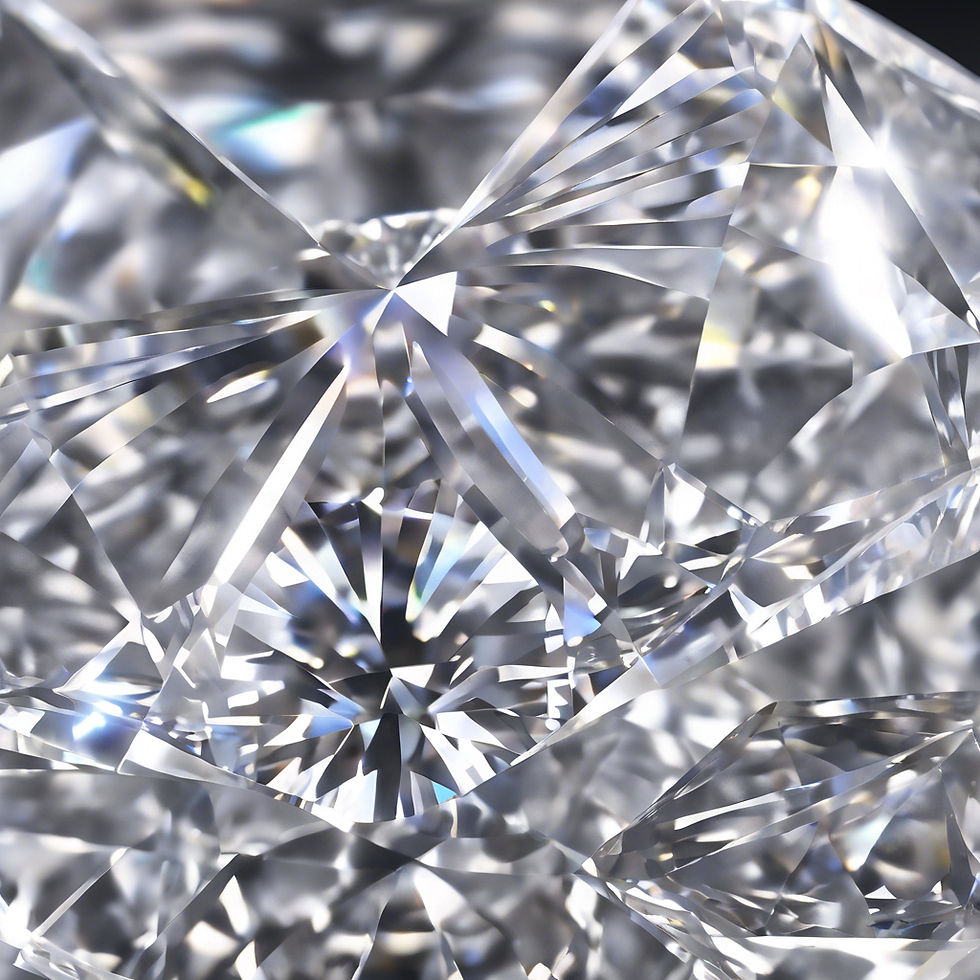The largest carat size of Lab Grown Diamond
- chrislau31
- Oct 16, 2024
- 3 min read

In the ever-evolving world of diamonds, a new milestone has been reached – the unveiling of the largest Lab Grown Diamond to date, a dazzling 30.18 carat marvel that has set the jewelry industry abuzz. Let's dive into the brilliance of this extraordinary gem, exploring its uniqueness and the groundbreaking implications it holds for the world of diamonds.

The Race for the Largest lab grown diamond:
The journey of lab grown diamond began in the 1950s with the creation of tiny, industrial-grade diamonds. However, it wasn't until the late 20th century that advancements in technology allowed for the growth of larger, gem-quality stones. This marked the dawn of a new era, one where the limitations of natural diamonds were finally being challenged.
As lab grown diamond technology matured, the race for the biggest stone intensified. In 2012, The first major milestone arrived when Gemesis Corporation unveiled a 15.22-carat emerald-cut lab grown diamond, shattering previous records and solidifying their position as a leader in the industry.
By 2018, CVD (Chemical Vapor Deposition) technology had matured significantly, allowing for the creation of even larger stones. In that year, the Diamond Foundry successfully grew a 20.57-carat D-color emerald-cut lab grown diamond, a significant leap forward that demonstrated the immense potential of CVD technology (IGI, 2022).

The Dazzling 30-Carat Milestone:
Just a decade later, the world witnessed another significant leap forward. In June 2022, the International Gemological Institute (IGI), the largest independent gemological laboratory globally, has assessed and rated a laboratory-grown diamond of 30.18 carats with an emerald cut, marking it as the largest of its kind in the world. Manufactured by Ethereal Green Diamond, LLP, this diamond, named the "Pride of India," is the initial polished lab-grown diamond to surpass the 30-carat mark. This accomplishment follows the examination and grading by IGI of previously record-setting stones, measuring 27.27 and 20.24 carats. (IGI, 2022)
Cultivated through the Chemical Vapor Deposition (CVD) method, the "Pride of India" received a grading of H color and VS2 clarity. The type IIa rough crystal, from which this diamond was crafted, underwent a growth period of around four weeks. Ethereal Green Diamond, based in Mumbai, India, has gained renown for its expertise in producing sizable, top-tier lab-grown diamonds.
The GIA's 34.59 Carat Marvel:
But the story doesn't end there. In August 2023, the Gemological Institute of America (GIA) announced the largest faceted lab grown diamond they had ever seen, weighing a staggering 34.59 carats. This CVD (Chemical Vapor Deposition) diamond, grown by Lusix Labs, pushed the boundaries even further, demonstrating the immense potential of lab grown diamonds and hinting at the possibility of even larger stones in the future (GIA, 2023).

34.59 faceted lab grown diamond
The Future of lab grown diamonds:
As technology continues to evolve, the potential for even larger lab grown diamonds seems limitless. This opens up exciting possibilities for designers and jewelers, allowing them to create truly unique and breathtaking pieces of jewelry. Moreover, the increasing affordability and ethical considerations surrounding lab grown diamonds are driving consumer demand, paving the way for a future where these dazzling gems are accessible to a wider audience.
Beyond the Lab: Natural Diamonds Still Reign Supreme in Size and Story:
While Lab-Grown Diamonds (lab grown diamonds) have taken the diamond world by storm with their ethical and eco-friendly appeal, their ability to easily outsize their natural counterparts remains a misconception. The natural world still holds the crown for the truly gigantic gems. Take the magnificent Cullinan Diamond, unearthed in South Africa in 1905, weighing a staggering 3,106 carats (over 621 grams) in its rough form. This behemoth yielded nine major polished diamonds and 96 additional brilliants, showcasing the exceptional size and quality achievable by nature's forces. Even amidst the growing prominence of lab grown diamonds, natural diamonds like the Cullinan Diamond stand as a testament to the Earth's remarkable capacity to create breathtaking beauty and enduring allure. Their scarcity and historical significance add a layer of depth and value that lab grown diamonds, for all their merits, still lack. So, while lab grown diamonds may offer a compelling alternative, it's important to remember that the natural diamond world still holds a unique charm and boasts unparalleled giants like the Cullinan, reminding us of the Earth's unmatched artistry and the enduring fascination with these precious stones. (Famous Diamonds, n.d.)
The story of lab grown diamonds is one of constant innovation and progress. With each record-breaking stone, the boundaries of size and possibility are redefined. As lab grown diamond technology continues to mature, we can expect to see even larger and more magnificent diamonds emerge, offering consumers an ethical, sustainable, and stunning alternative to their natural counterparts. The future of diamonds is undoubtedly bright, and thanks to lab grown diamonds, it is also more accessible and dazzling than ever before.
